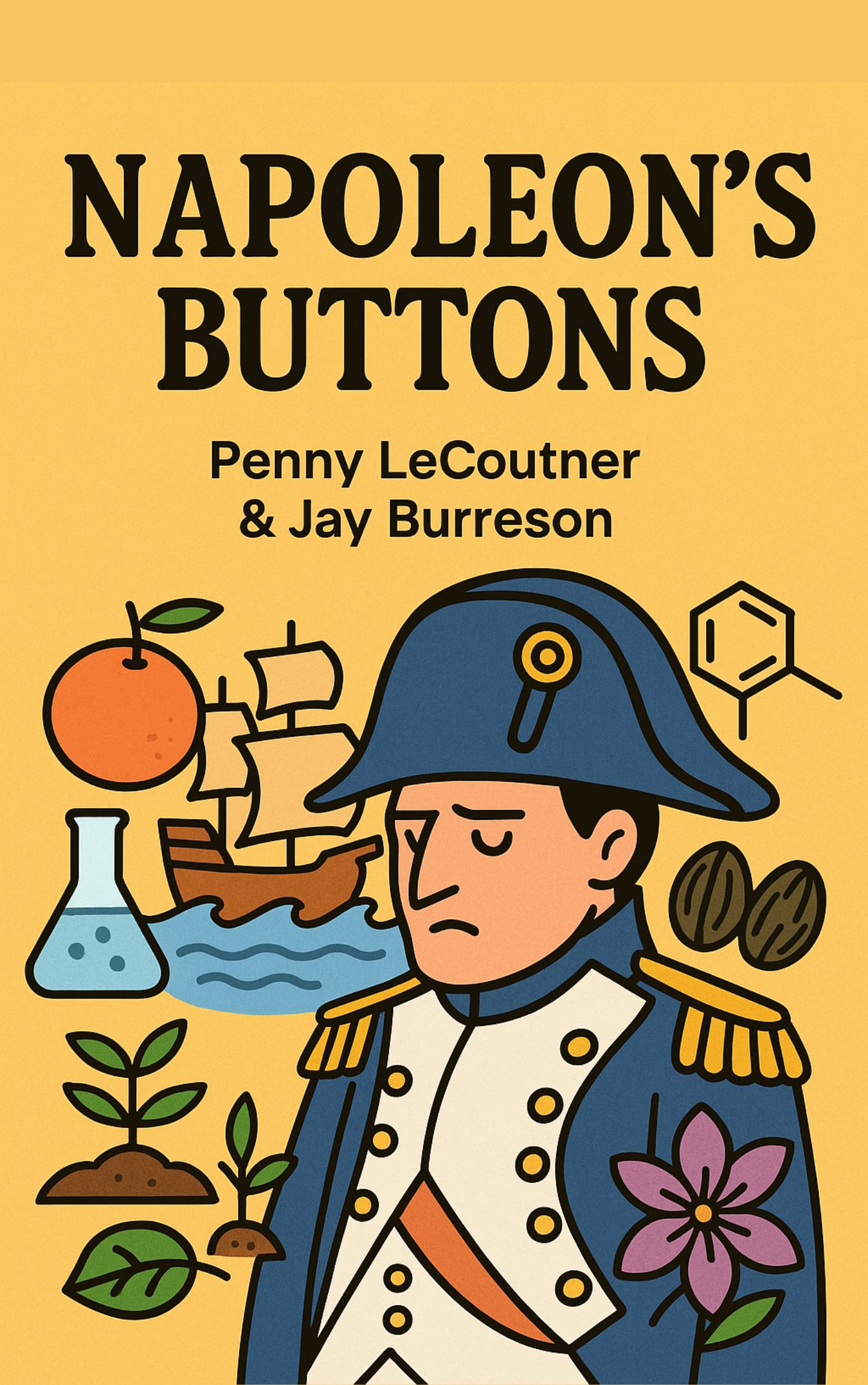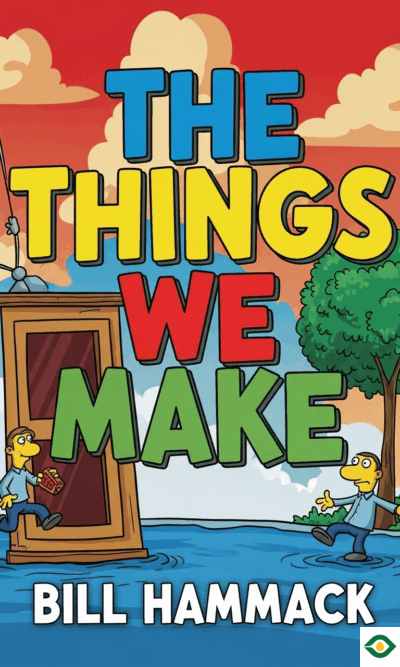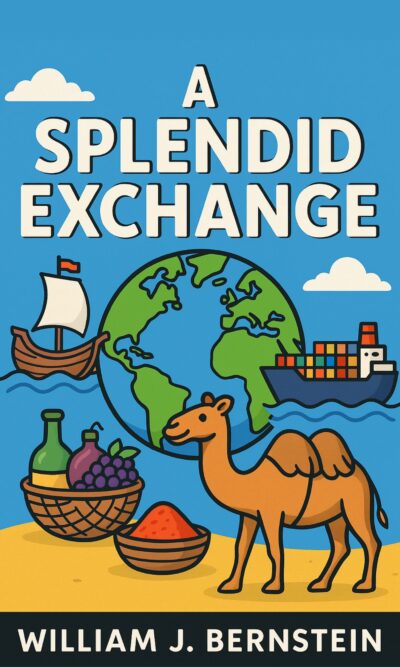Description
History often feels like the story of kings, wars, and revolutions. But behind those big events, tiny things quietly shaped the course of human destiny. Molecules—those unseen building blocks of matter—changed empires, shifted economies, saved lives, and even started wars. This book shows how something as small as the composition of a button, or the juice of a fruit, could decide the fate of nations.
Take Napoleon’s invasion of Russia in 1812. His army of half a million men set out in summer, only to be crushed by the Russian winter. Historians often point to strategy, weather, or resistance as reasons for the collapse, but there’s another, more unusual explanation. The soldiers’ uniforms were held together by tin buttons. In extreme cold, tin can break down into powder, a process known as tin disease. If the buttons failed, soldiers’ coats would fall apart, leaving them exposed to brutal winds. That small chemical weakness might have turned the tide of the campaign, leaving Napoleon’s once-mighty army in rags.
Equally surprising is how spices, especially nutmeg, shaped global maps. In the 1600s, nutmeg was valued far beyond its role in flavoring food. People believed it could protect against the plague. Its high price made it worth more than gold. The Dutch and the English fought fiercely over its control. In one treaty, the Dutch gave up Manhattan, then called New Amsterdam, in exchange for a tiny island that grew nutmeg. Today, New York stands as proof of how a spice helped redraw the world.
Another example comes from the sea. For centuries, sailors feared scurvy, a disease caused by a lack of vitamin C. Ships might leave port with hundreds of sailors, only to return with a fraction alive. The cure was simple—citrus fruit—but knowledge of this was slow to spread. When finally applied, citrus transformed exploration. Sailors could travel farther, survive longer, and reach parts of the world previously out of reach. Whole continents were opened to trade and colonization because of a vitamin hidden in an orange.
Rubber is another story of how chemistry reshaped human progress. Ancient peoples in South America had used it for centuries, but raw rubber was unstable—it melted in heat and cracked in cold. European inventors experimented and eventually discovered ways to harden and stabilize it, a process called vulcanization. Suddenly, rubber became the backbone of modern industry. Tires, machines, cables, even space travel depended on it. A sticky sap from trees ended up powering the industrial age and beyond.
Color, too, had its own chemistry-driven revolution. For centuries, bright dyes came from rare plants or animals, and they were so expensive only the rich could afford them. Then, by accident, a young student discovered the first synthetic dye in the mid-1800s. It created a brilliant purple, quickly adopted by royalty and fashion. Soon, synthetic dyes multiplied, bringing affordable color to clothing worldwide. This race for colors also gave rise to the chemical industry, which later developed medicines, fertilizers, and plastics. A mistake in a laboratory became the root of modern chemistry.
Chemistry didn’t just shape industries—it shaped society. In the twentieth century, women had few reliable ways to control pregnancy. Dangerous homemade remedies were common, but they were risky and often ineffective. Two determined women, Margaret Sanger and Katharine McCormick, funded research to develop a simple pill. Scientists worked on hormones that could regulate cycles, and from that came the first reliable oral contraceptive. Within years, millions of women around the world were using it. Beyond lowering birth rates, it opened doors to education, careers, and independence. A small tablet quietly sparked massive social change.
Plants and natural remedies also carry stories of chemistry’s influence. In medieval times, village healers—later branded as witches—used herbs to treat sickness. Some of their methods sound mystical, but many contained real chemical compounds. For instance, willow bark was used for pain relief; centuries later, its key ingredient inspired aspirin. But suspicion and fear turned these healers into targets of persecution, and thousands were killed. Ironically, their knowledge of plant chemistry laid groundwork for modern medicine.
One of the deadliest diseases in history, malaria, was fought with the help of quinine, a chemical found in the bark of the cinchona tree. Indigenous people in South America had long used it to reduce fevers. When Europeans discovered it, quinine became the first real weapon against malaria. Its importance was so great that nations smuggled seeds, planted trees across colonies, and fought over supplies. Even today, malaria remains a huge challenge, but quinine marked the beginning of scientific cures against it.
Across all these stories, a pattern emerges: tiny molecules had giant consequences. They decided the survival of armies, the fates of cities, the expansion of empires, and the health of whole populations. What seems small or invisible—the bond between atoms, the hidden property of a spice, the stability of a fabric—has the power to reshape human life on a massive scale.
This perspective changes how we see history. It’s not only shaped by generals, kings, or revolutions, but also by chemistry quietly working in the background. A simple fruit juice saved sailors. A spice war gave birth to New York. A pill changed women’s lives. A powdery disease of tin may have toppled an emperor.
The message is clear: the world is shaped not just by big events, but also by the smallest details of matter. Understanding these stories reminds us how deeply science and everyday life are intertwined. What we wear, eat, drink, and discover can change the destiny of entire civilizations.





